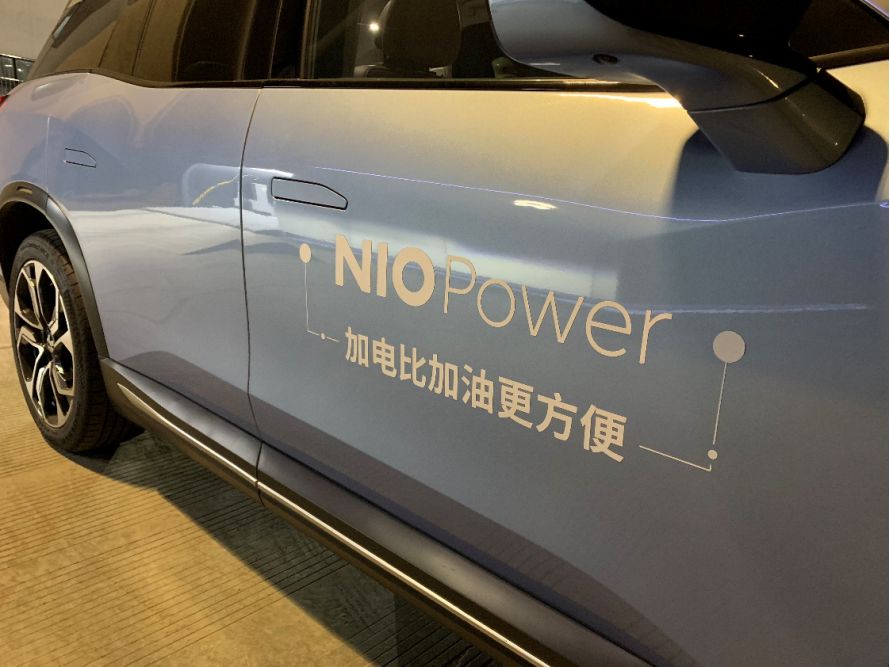On November 13, 2018, NIO held the G4 Beijing-Hong Kong-Macau Expressway battery swapping event, covering a total distance of 2234 kilometers in three segments, completed by 19 media outlets as a relay. We participated in the Zhengzhou-Changsha segment of the journey.
Upon seeing the vehicle, we saw the slogan “NIO Power Charging is More Convenient than Refueling” neatly posted on the doors of all four ES8s. What was the actual experience like? To cut to the chase, I did not experience any inconvenience driving an electric vehicle during the long highway journey.
Station Layout
NIO Power’s battery swapping stations complement the full suite of charging options (home chargers, destination chargers, superchargers, and mobile charging units). The biggest advantage of the battery swapping station is its speed, so NIO has prioritized building them inside highway service areas, where users are usually in a hurry.
NIO has built 18 battery swapping stations in 14 service areas along the G4 Beijing-Hong Kong-Macau Expressway on both the east and west sides. Don’t worry if there’s only one battery swapping station on a single side: users can simply use the central path to reach the station on the other side. Additionally, NIO has stationed personnel at the service areas to assist users with battery swapping. The main reason for building the stations on only one side is that the current user volume is small enough for one side to handle. NIO has also stated that it will increase the number of battery swapping stations as the number of users increases.
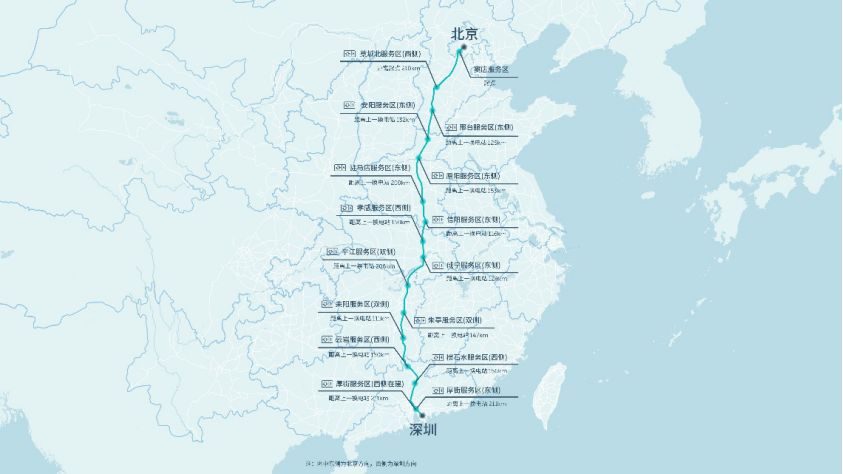
Station Infrastructure
NIO’s battery swapping stations have a lot of features:
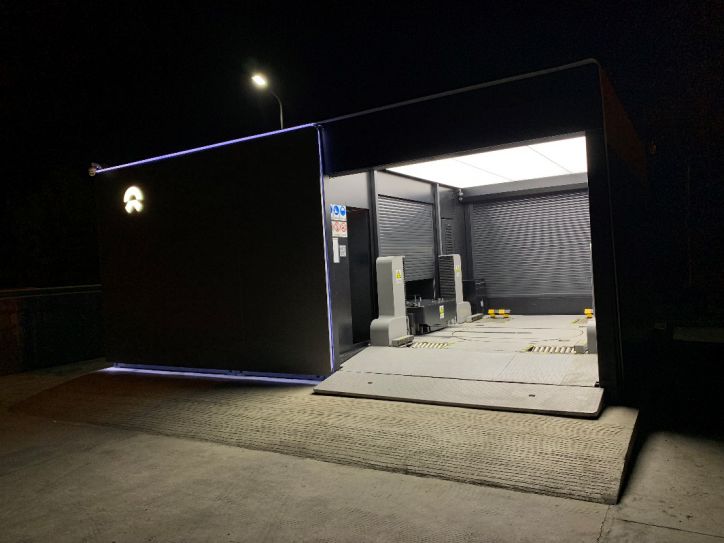
- Each battery swapping station currently stores 5 batteries.
- Each battery has a charging power of around 60kW. The total capacity of the 300kW battery swapping station is sufficient to provide energy to 5 batteries charging simultaneously at 60 kW, and they can charge up to 80% in one hour.
- The battery swapping station has a modular design: one standard station consists of one working station and one battery storage unit, occupying three parking spaces.
- Each standard battery swapping station (5 batteries + 1 work station) has the capacity to service 72 cars per day.
- If the number of users increases in the future, NIO can increase the number of battery storage units (which hold up to 6 batteries each) or work stations.* Currently, the battery swap station is staffed 24 hours a day.
Battery Swapping Process
We went through 5 battery swaps this time, and the entire process takes about 6-8 minutes, which will become shorter as proficiency improves.
First, place an order through the NIO App, and then hand the vehicle over to the staff.
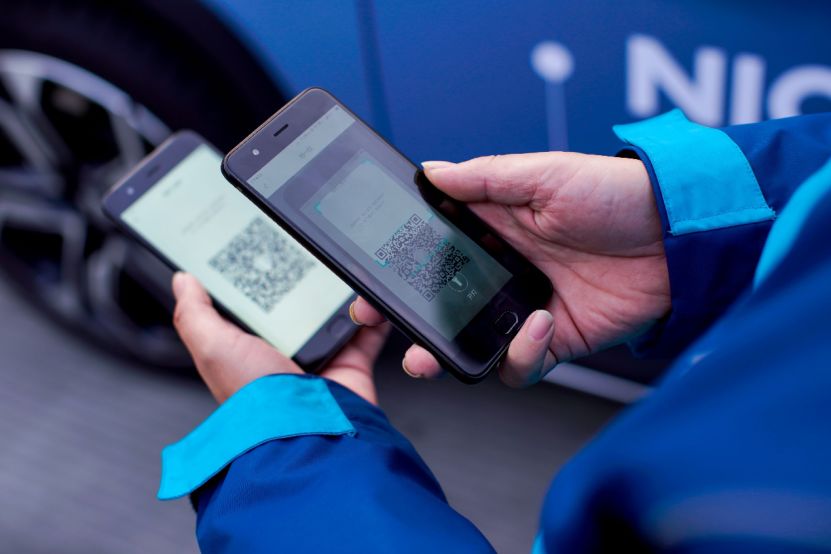
The staff will invert the vehicle into the designated position of the battery swap station, and trigger the “Enter Battery Swap Mode” button located on the ES8 center console. After entering “Battery Swap Mode,” the vehicle will undergo a WiFi connection authentication process with the battery swap station. The staff will exit the vehicle and lock it, entering the control room to enter the service password to begin the battery swap process. At this time, the vehicle will flash a yellow light to indicate that the self-check is completed, the original vehicle circuit is disconnected, and it enters sleep mode.
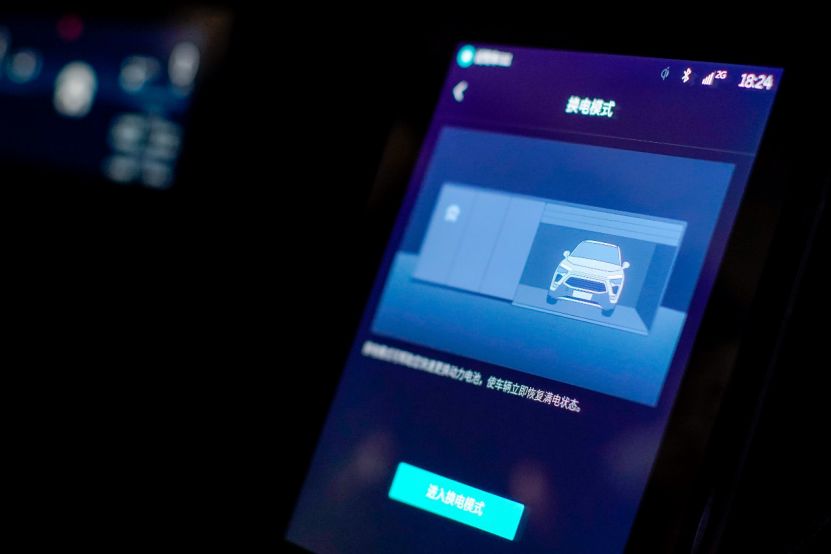
Subsequently, the push rod at each of the four wheel locations will make minor adjustments to the vehicle’s position, and then the lifting arm will raise the vehicle to a certain height. The RGV cart will then enter. The RGV cart is the essence of the entire battery swap station, carrying 10 unlocking devices (screws). The position is determined by a visual recognition system. The unlocking devices rise to the 10 bayobolts, and begin rotational unlocking. (“bayobolt” is a NIO patented technology that ensures both a strong connection and some flexibility, allowing the maximum degree of accuracy of the unlocking devices and bolts to be matched thanks to the combination with RGV floating base and visual recognition system.)
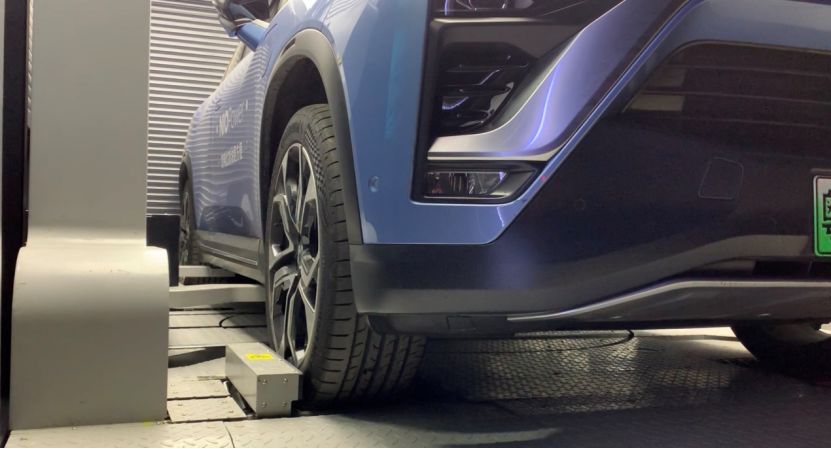
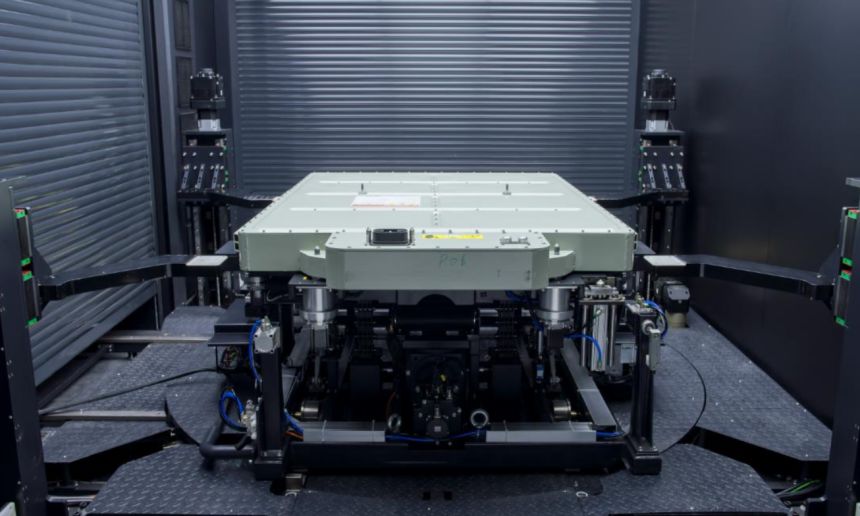 After unlocking, the robot lifts the battery and transports it to the battery compartment for charging, then takes out the fully charged battery and transports it to the bottom of the ES8. Repeat the process of visual positioning, rotation, and locking to complete the battery installation. During this process, it is important to note that the ES8 battery uses a water-cooling system, so there is inevitably an interface for connecting the cooling liquid pipeline. NIO has put a lot of effort into ensuring that there is no cooling liquid leakage each time the interface is inserted or removed, and the interface has a service life of up to 20,000 times.
After unlocking, the robot lifts the battery and transports it to the battery compartment for charging, then takes out the fully charged battery and transports it to the bottom of the ES8. Repeat the process of visual positioning, rotation, and locking to complete the battery installation. During this process, it is important to note that the ES8 battery uses a water-cooling system, so there is inevitably an interface for connecting the cooling liquid pipeline. NIO has put a lot of effort into ensuring that there is no cooling liquid leakage each time the interface is inserted or removed, and the interface has a service life of up to 20,000 times.
Once the installation is complete, the ES8 headlights will light up, indicating the successful installation of the battery. Afterwards, the system will perform a self-test, turn on various high and low-voltage components switches, turn on the high-voltage circuit, and wake up the onboard computer. At the same time, the main control screen of the battery swap station will display “battery swap complete”. At this point, the specialist can drive the ES8 away from the swap station, completing the swap.
High-speed Endurance
Now let me talk about the high-speed endurance that everyone is most concerned about, in combination with information about the battery swap station.
The above 8 points are the unchanged conditions for this journey. To briefly introduce, on the evening of November 13th, we met with the previous group of media at Yuanyang Service Area and received the NIO ES8 Founder Edition for test drive. The software version for the test car was still 1.0.8b and the latest 1.1.1 version was not yet available.
There were a total of 4 people in the car: me, Uncle Xiao Te, and two NIO staff members. We drove from north to south, stopping at 6 service areas and swapping the battery at 5 of them. The outside temperature was 7℃ to 14℃, mostly around 10℃. The journey was mostly at night, so for safety reasons, the NIO staff requested that we try to keep the car convoy moving, departing together after everyone had completed the battery swap at each station.
In addition, all trajectory and speed data of this journey was recorded in real-time using the Speedometer and Xingzhe APP.
Section 1: Yuanyang Service Area to Zhumadian Service Area.Driving the first section, the theoretical distance was 202.6km. However, we made a mistake soon after leaving the service area because car #2 turned onto the Lianhuo Expressway by mistake. I, driving car #3, and the following car #4, also inadvertently turned onto the Lianhuo Expressway and had to exit at the nearest ramp and then find a way to rejoin the G4, resulting in an additional distance of more than ten kilometers. We tried to maintain a speed of 120 km/h, which was a small challenge for the ES8. On a particularly smooth road section, I used the cruise control to maintain 120 km/h for 20 kilometers, which resulted in a visible loss of 34 km of cruising range. In other words, the actual consumption rate at 120 km/h was roughly 1.7 times higher than the displayed rate. As shown in the above chart, we were basically driving at the speed limit for the first 160km. After driving for 160km, Uncle Xiao Te, who has ample experience driving electric vehicles on the expressway, suggested that we reduce our speed in consideration of remaining cruising range, so we drove at a speed of 80-100 km/h for the last 50 km. All vehicles eventually arrived safely at the Zhumadian service area.
Driving the second section, Uncle Xiao Te was behind the wheel. Since it was a shorter distance at a theoretical 115.4km, he drove more aggressively. According to Uncle Xiao Te’s driving experience, version 1.0.8b of the ES8, as opposed to version 1.0.5, has significantly improved throttle response, resulting in a very good driving experience.
Driving the third section went smoothly from the Xinxiang to the Xiaogan service area.The third paragraph was still under my driving, with a theoretical distance of 150.5km. As it was in the late night, the other members in the car were resting, so I drove gently. However, during this journey, we left Henan Province and entered the territory of Hubei Province. The expressway changed from a double-sided 8-lane road to a double-sided 4-lane road, and we often encountered big trucks overtaking, resulting in significant fluctuations in speed.
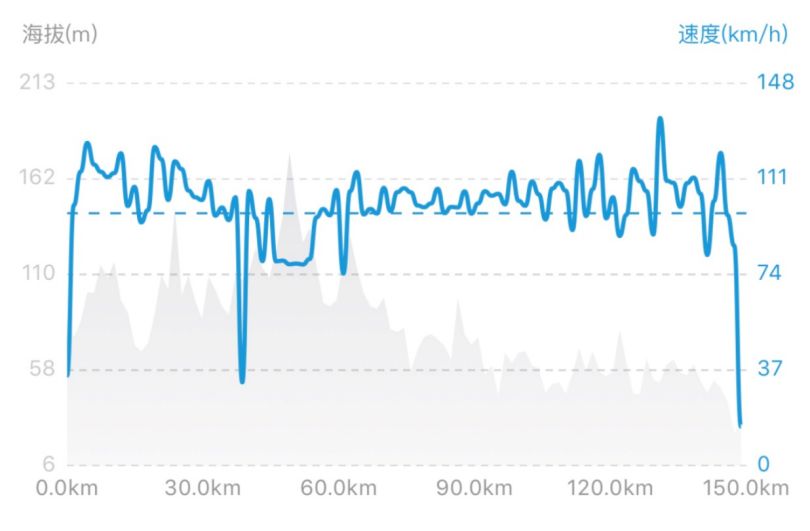
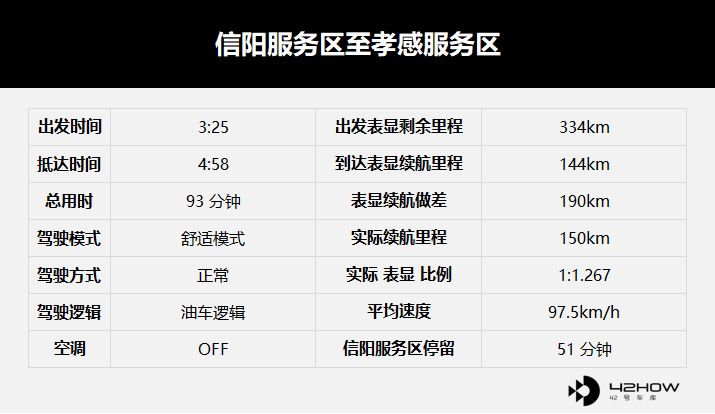
The fourth paragraph: from Xiaogan Service Area to Xianning Service Area
The fourth paragraph was driven by Little Te Uncle, with a still aggressive driving style, and for more than ten kilometers we did not follow the team and instead headed to the service area at a relatively fast speed.
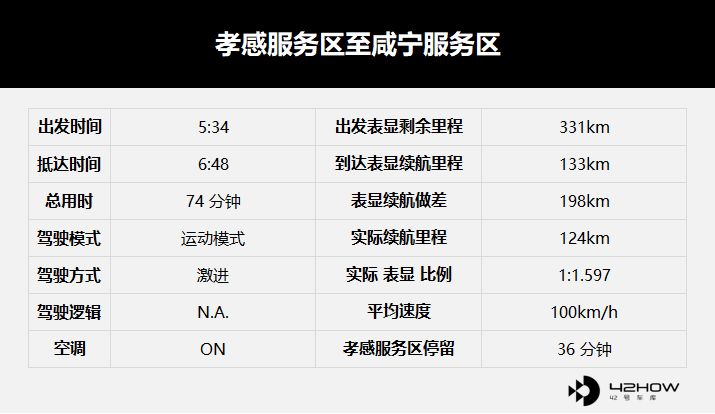
The fifth paragraph: from Xianning Service Area to Pingjiang Service Area
This was the last section of our entire journey, with a theoretical distance of 206 kilometers. We stopped at a service area midway, just for the team to regroup and without recharging. The first half was driven by NIO staff, and the second half was driven by me. I recorded this section as two separate trips.
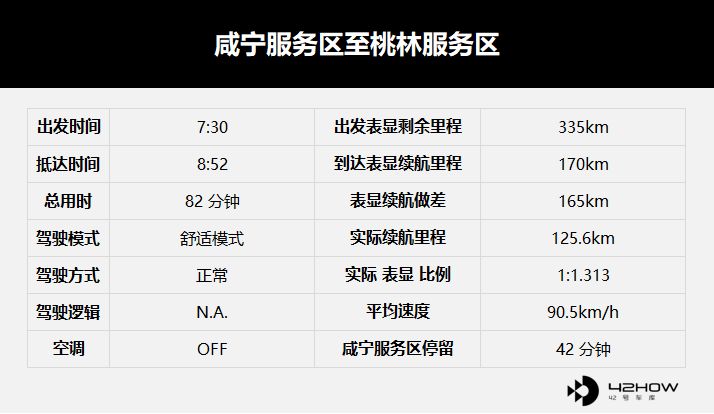
After arriving at Taolin Service Area for maintenance, I drove the final section of the journey.
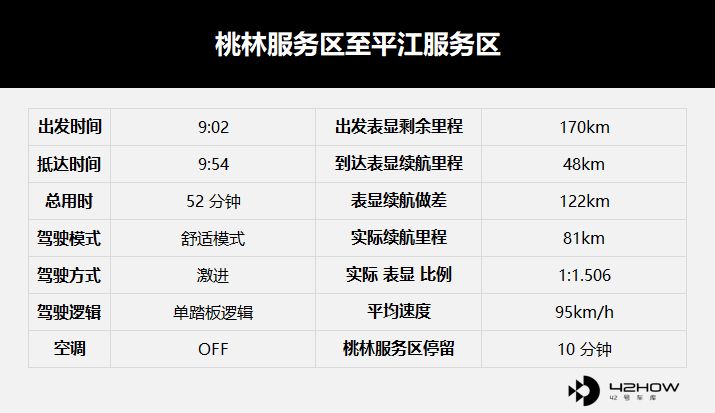
After reading these tables, I believe everyone has a clear overview of our journey. I would like to summarize a few pieces of information:
-
The displayed range after each battery change was between 330-355km, which means the batteries at the swap station were not fully charged, but approximately 93%-95% charged. This is mainly because the charging speed for the last 10% of the battery is slow and, to protect the battery, charging to only around 90% is better for the longevity of the battery.2. The total time spent in the service area for each car’s battery replacement and personnel maintenance was between 36 and 51 minutes, with the fastest time being approximately 10 minutes for a single car’s battery replacement.
-
This trip was an exceptionally rare all-high-speed journey, with relatively low traffic at night allowing for an average speed of around 100km/h. The actual range of the ES8 under these high-speed conditions is about 1:1.412 compared to the displayed range.
-
Initially, I drove the car as if it were a gas-powered vehicle, applying both brakes and accelerator pedals. However, for the final portion of the trip, I switched to the unique single-pedal logic of an electric vehicle. When driving at speeds that fluctuate widely between 80-120km/h in traffic, gas-powered vehicles may require frequent switching between the accelerator and brake pedals, whereas electric vehicles only require control of a single pedal. When the pedal is pushed down, the car accelerates, and when it is released, the regenerative braking system begins to take effect, producing a braking sensation. Additionally, the more the pedal is released, the greater the intensity of the braking force. With the exception of emergency stops, single-pedal driving is usually sufficient, and I didn’t need to use the brakes during the final 80 kilometers of the journey. If single-pedal driving is used throughout the entire trip, it will undoubtedly be more friendly to the vehicle’s range.
Driving Experience
Finally, let me briefly describe my driving experience with the ES8 on the highway. The 1.0.8b version of the car no longer has the acceleration delay issue that was present in version 1.0.5, and the power is really outstanding, whether it’s explosive power or later power during high-speed driving. However, the steering feeling is a bit too light in comfort mode, and a bit too heavy in sport mode. The riding experience is also good, with the footrest for the front passenger being very comfortable and the extremely large size of the ES8 providing ample space in the back seat, even though my feet couldn’t reach below the front seat. The 3-meter wheelbase was sufficient to allow me to sit comfortably in the back seat.
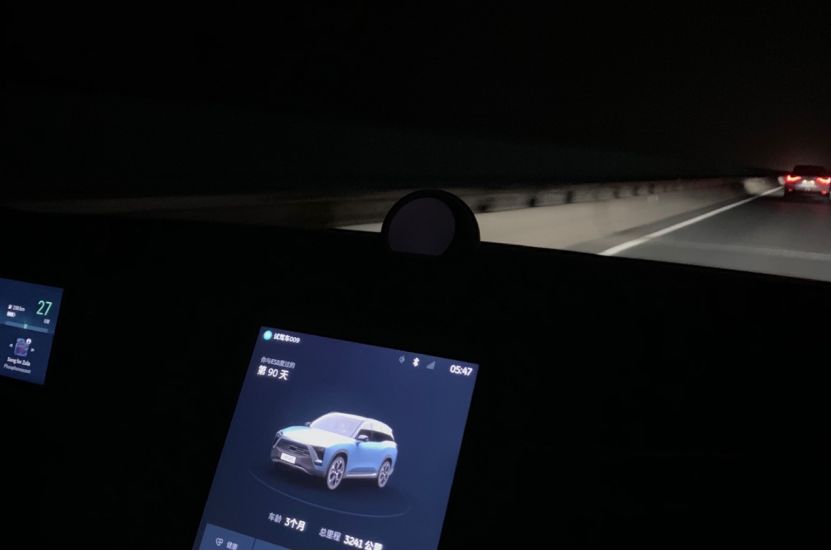
During this trip, the car’s infotainment system was relatively trouble-free, with only a few instances of Nomi having a black face but still able to communicate. However, the car’s 4G network was not particularly stable, with frequent instances of no signal between Zhengzhou and Changsha. I hope that NIO can work to optimize this issue. Overall, my high-speed driving experience with the ES8 left a good impression.
Finally, let me address some of the concerns that you may have.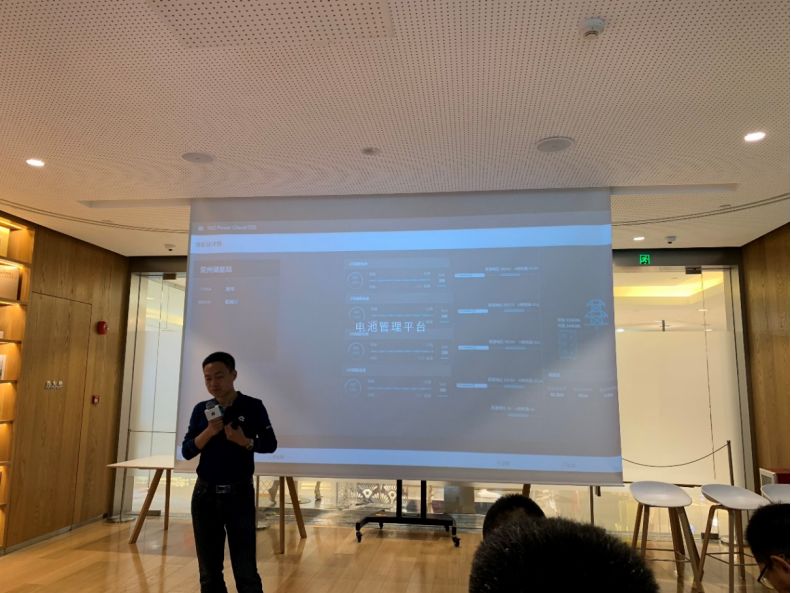
- What should you do about battery consumption?
The official NIO battery management platform will detect all batteries rotating in the power swapping station. If any battery does not meet the standards, that battery will be taken out of rotation.
- What is the price?
Owners of the first-generation ES8 and owners who paid the deposit before December 31, 2018 are eligible for 12 free power swaps. If the number of swaps exceeds 12, a fee of 180 yuan/swaps will be charged.
- Are power swapping stations temporary?
Of course not. After completing the G4 Beijing-Hong Kong-Macau power swap line, some owners have tried this route, taking a total of 27 hours.
The power swapping method seems to be the fastest way to replenish energy at the current technological level. The layout of power swapping stations makes long-distance travel more convenient for NIO owners. As a pioneer in promoting electric power supplementation in China, NIO still has a long way to go…


- Weima EX5 400 first-round endurance test, with amazing 1:1 performance* Dual Test Drives & In-Depth Comparison: 33 Details Between NIO ES8 and Model X

This article is a translation by ChatGPT of a Chinese report from 42HOW. If you have any questions about it, please email bd@42how.com.
